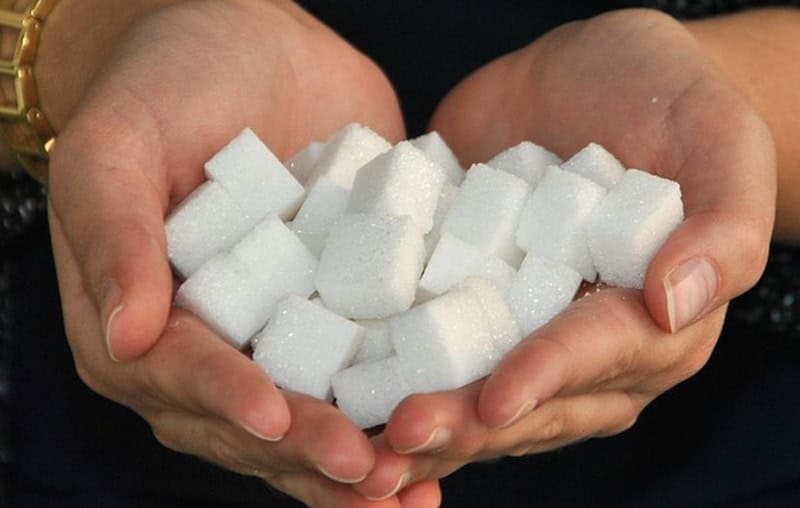Discover the Uses and Advantages of Beet Sugar Vs Cane Sugar in Your Daily Diet Regimen
Discovering the distinct high qualities of beet and cane sugar reveals even more than simply their sweetening capabilities; it highlights their unique influence on health and cookeries. Beet sugar, known for its subtle flavor, is typically favored in fragile desserts, whereas cane sugar, with its tip of molasses, includes splendor to durable dishes. Each type holds its very own dietary profile and glycemic implications, inviting a deeper understanding of their functions in a well balanced diet and lasting usage techniques.
Origin and Manufacturing Procedures of Beet and Cane Sugar

The unique environments and dirt kinds needed for growing sugar beetroots and sugarcane add to differences in their growing practices and geographical circulation, affecting the economics and sustainability of their manufacturing. beet sugar vs cane sugar.
Nutritional Contrast In Between Beet Sugar and Cane Sugar
In spite of stemming from different plants, beet sugar and cane sugar are nutritionally really similar, both mostly consisting of sucrose. Each offers concerning 4 calories per gram, converting to about 16 calories per teaspoon. Structurally, both sugars are composed of roughly 99.95% sucrose, with minimal amounts of other substances like wetness and trace minerals, which do not dramatically alter their dietary accounts.

Ultimately, when selecting between beet sugar and cane sugar based upon dietary material alone, both deal the same benefits and drawbacks as they are basically types of the very same molecule-- sucrose, offering fast energy without other nutrients.
Effect on Health: Glycemic Index and Caloric Content
Checking out even more into the impacts of beet sugar and cane sugar on health and wellness, it is vital to consider their glycemic index and calorie content. Both sugars are categorized as sucrose, which includes glucose and fructose. This make-up leads them to have a comparable influence on blood glucose degrees. The glycemic index (GI) of both beet and cane sugar is around 65, categorizing them as high-GI foods, which can create fast spikes in blood glucose levels. This is an essential element for individuals handling diabetes mellitus or those attempting to maintain their energy levels throughout the day.
Each kind of sugar includes around 4 calories per gram, making their caloric content equivalent. For those keeping track of calorie consumption, especially when taking care of weight or metabolic wellness conditions, comprehending this equivalence is vital (beet sugar vs cane sugar). Nonetheless, too much usage of any kind of high-calorie, high-GI food can add to health problems such as excessive weight, cardiovascular disease, and insulin resistance.
Environmental and Economic Factors To Consider of Sugar Manufacturing
Beyond wellness influences, the production of beet and cane sugar also elevates substantial ecological and economic issues. Sugar beet growing has a tendency to call for cooler climates and has a reduced geographical footprint compared to sugar cane, which thrives in exotic areas.
Additionally, making use of chemicals and plant foods in both beet and cane sugar farming can bring about dirt deterioration and contamination, more impacting biodiversity and local water bodies (beet sugar vs cane sugar). The option between cultivating sugar beet or cane typically rests on local environmental problems and financial variables, making the sustainability of sugar manufacturing a complex their website issue
Culinary Applications and Taste Differences
While the ecological and economic facets of sugar production are indeed significant, the choice in between beet and cane sugar likewise affects culinary applications and flavor accounts. Beet sugar, acquired from the sugar beet plant, is known for its extremely neutral taste.
Walking cane sugar, extracted from sugarcane, frequently keeps molasses traces, which present an unique splendor and depth. The small variation in dampness content between beet and cane sugar can influence the texture and consistency of recipes, making cane sugar a preferred selection for certain recipes that profit from its distinct properties.

Final Thought
In verdict, both beet and cane sugar have unique origins and manufacturing processes, offering comparable dietary accounts with mild distinctions in sodium material and flavor. While their influence on wellness, particularly regarding glycemic index and calories, is similar, the option between them commonly boils down to environmental, economic elements, and certain culinary requirements. Understanding these aspects can assist customers More Bonuses in making informed decisions that straighten with their health objectives and taste choices.